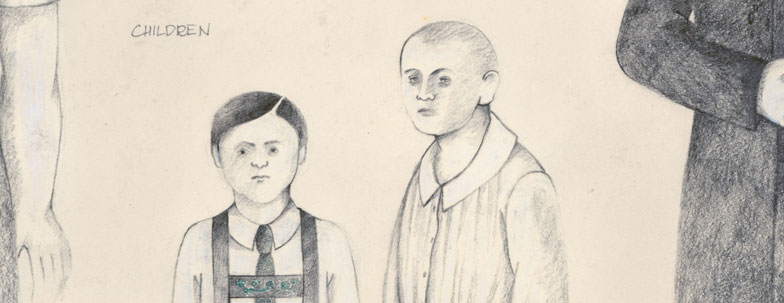Tales from the Vienna Woods

Written by
Ödön von Horváth
Directed by
Keith Hack
Produced by:
Yale Repertory Theater, New Haven, Connecticut
Venue:
Yale Repertory Theater
Year:
1978
Ödön von Horváth was Austro-Hungarian writer whose work was influenced by the turbulent period in which he lived. At the end of World War I the Austro-Hungarian monarchy collapsed and with it collapsed the uniquely charismatic milieu of Vienna, its cultured and cosmopolitan capital. Before the war, Vienna rivaled Paris in quality of its arts and refined living. The downfall was radical; almost overnight unemployment and poverty replaced prosperity and security. In time, the sudden chaotic changes in the culture created fertile ground for fascism.
Ödön von Horváth’s work centers on members of Viennese middle class and their efforts to maintain their status with dwindling resources and opportunities. His characters are not visibly desperate but instead, try to find diversion in order to ward off existential fear. Horváth employed the genre of 19th century Austrian folk play featuring middle class locations such as beer halls, dance halls, and coffee houses.
Although Ödön von Horváth was well-known during his lifetime, after his early death in 1938, his plays were rarely performed. Our 1978 production of Tales from the Vienna Woods marked the American premiere of this play.
Having grown up in Bratislava, a town so close to Vienna that there once was a tramway connecting the two, I had direct experience of the world Ödön von Horváth wrote about. Czechoslovakia only became an independent country after World War I. Before it had been part of the Austro-Hungarian monarchy. My grandmother and several of her siblings went to Vienna to find work, when Vienna was still the capitol of a powerful empire. (Interestingly, von Horváth attended high school in Bratislava). I had heard stories about the old Vienna from both my grandmother and from my mother who had once, as a young actress in Vienna, auditioned for Max Reinhardt, the great Jewish Austrian theater director (best known in the US for his 1935 film version of Shakespeare’s Midsummer Night’s Dream with Mickey Rooney and James Cagney.). I had visited Vienna and the type of places von Horváth wrote about, wineries, coffee houses, and Prater, Vienna’s famous amusement park. By the time I knew Vienna, it was living on its memories of happier times, and trying to forget the crimes committed there, especially against Jews, during World War II. It was a sad loss for theater that von Horváth died so young, since his considerable talent for understanding what happens to ordinary people in not so ordinary times, would have come to use in describing post- World War II Vienna.
In his autobiography (The World of Yesterday) Stefan Zweig, von Horváth ‘s better known Viennese contemporary, described the times after World War I in this way:
“Financial chaos prevailed yet the daily round seemed little affected ….bakers baked bread, cobblers made boots, authors wrote books peasants sowed and reaped, trains ran on schedule, the morning newspaper never failed, and it was just the places of entertainment, bars, and theaters, that were filled to capacity. The very fact that what once represented the greatest stability- money – was dwindling in value daily caused people to assess the true value of life-work, love, friendships, art and Nature the more highly…”
When I was asked to design costumes for Tales from the Vienna Woods I was a young costume designer, barely one year out of school. Keith Hack, the director of the play was also young but had some very impressive credits. He began his career in England and had staged numerous productions for the Royal Shakespeare Company, Edinburgh Festival, and Glasgow Citizen’s Theatre. I remember that he was encouraging and not difficult to work with.
Looking back at the experience and at the designs, it is clear that I committed a not too uncommon error of most young designers: I became riveted by one source of research and allowed it to dominate the design. The fact that this source had exceptional resonance with this play is not a good excuse.
August Sander was a German photographer, who created a series of photographic portraits known as “People of the 20th Century”. Sander published 60 portraits from this series in 1929 under the title: “Face of Our Time”. I first came across his photographs while studying photography at the Art Institute of Chicago. It is difficult to describe the impact that these photographs had on me, and continue to have on me. Sander’s photographs were described in the following way (by Ulrich Keller in 1993 edition of the photographs published in the US under the title “August Sander, Citizens of the Twentieth Century”):
“Snapshots of human pleasure and pain are not August Sander’s specialty. He prefers the form of portrait; the people in his portraits are aware of the camera, and they assume representative poses. Arranged in orderly succession, these portraits do not attempt to feel the pulse of life; rather, they try to reflect the stratification of society.”
My designs are copies of these astonishing social portraits.
Next production, The Marriage of Figaro.